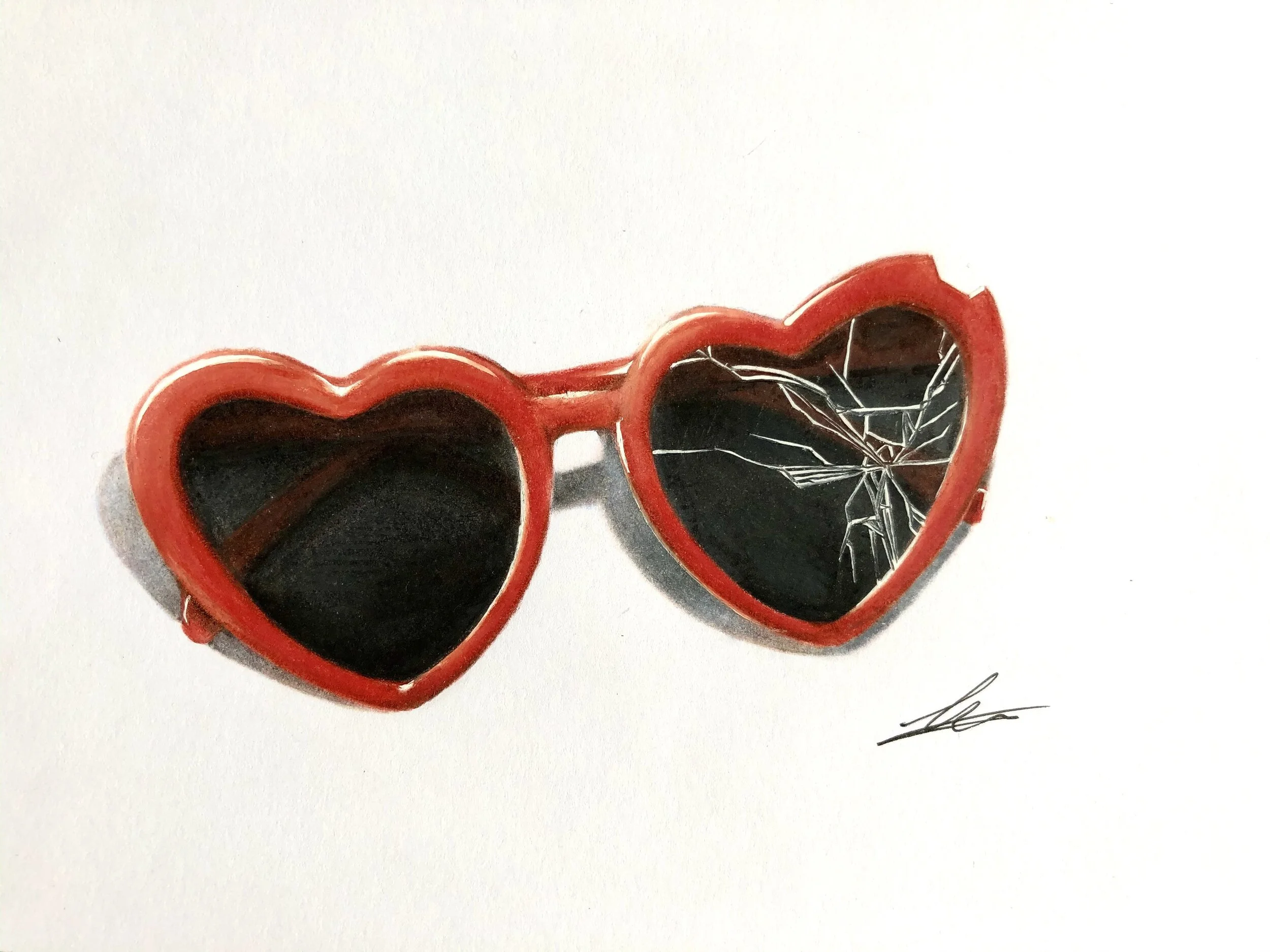Lolita as Modern Mythology
Illustrated by Tula Wild.“Lolita, light of my life, fire of my loins” – from the first, voluptuous sentence of Vladimir Nabokov’s infamous novel, the reader is drawn into the distorted world of a predatory, unreliable narrator and his paedophilic advances towards his stepdaughter. Since Lolita’s publication in 1955, however, the 12-year-old Dolores, kidnapped, raped and exploited by her stepfather, has been transformed into a sensual cultural icon.
Lolita loses all agency – her name, her childhood, her voice, all stolen by her stepfather Humbert. And yet, as she attempts to regain some kind of power, using sexual favours for survival and pocket money, she is labelled a seductress, a femme fatale: sexually dangerous. Lines such as “it was she who seduced me” are strangely reminiscent of the victim blaming which survivors of abuse and harassment face on a regular basis. Humbert’s attempts at justifying his abuse of Lolita throughout the novel are easily comparable to current cases where women are vilified and sexualised both in the media and closer to home. Lolita’s glamorised persona in popular culture has been instrumental in perceptions that rape is in some way linked to personal characteristics, dress and behaviour. This is, of course, one of the many novels in which the male gaze takes precedence – Humbert’s stepdaughter is a twisted male fantasy, a dream in which this young girl is innocent and ripe for corruption. As we have seen countless times recently, sexual offences mostly go unpunished – creating the storyline that women are complicit in male violence is simply another way of absolving men of their accountability.
Why is the mythology of Lolita’s characterisation so damaging for young women? Many have seized upon the Lolita aesthetic as glamorous, alluring, subversive. The iconic heart shaped sunglasses, cherry red lipstick and polka-dot bikini are sweet enough on the surface, but borrowing these images from a novel focused on abuse is not. The erotic undertones of these reclamations seem to show the internalisation of the male gaze completely, whereby the fetishization of young girls as depicted in the novel, is encouraged. Humbert’s position as an unreliable and manipulative narrator must be taken into account – underage girls are unable to be seductive, because they cannot consent. Therefore, the fact that this novel has created an iconography based on the rape of a young girl is distressing, and shows the prevalence of inbuilt misogyny in our culture.
Misleading book covers, film adaptations and song lyrics have all contributed to the connection between this novel and 21st century culture. We are unwilling to let this story go, ever enticed by the intimate narrative style and dark, uncensored subject matter. But it was the 1962 film that created the iconic Lolita aesthetic we know today, using sexualised props and poses to present Lolita’s character as a willing and equal participant in the sexual relationship. Perhaps part of what makes Lolita’s character so enduring is that she is entirely a fantasy creation, a myth peddled by those who wish to blame survivors of abuse or suggest they were complicit in it. In particular, Lana Del Rey utilises the trope of Lolita in her album ‘Born to Die’, using lines from the novel, as well as imagery of heart shaped sunglasses and even naming a song Lolita. The singer’s popularity has led to Pinterest, Instagram and Tumblr accounts fixated on this aesthetic. These accounts feature sugary sweet images of braided hair, bubble gum and red lollipops, showing that the glamorisation of this novel has had wide-reaching influence on media in 2021.
References to Nabokov’s controversial novel have permeated our culture – Lolita, the brave survivor of a horrific childhood, is forgotten. In her place, remains the myth of the over-sexualised, seductive cultural icon. We need look no further than the dictionary definition of Lolita as “a precociously seductive girl” to understand that the fetishization of young girls is being encouraged and justified with this trope. From a Marc Jacobs’ eyeshadow palette named ‘Lolita’, to fashion trends and mentions in Katy Perry and Lana Del Rey lyrics, this image, seemingly now related to sexuality and flirtation, is capitalised on in all areas of society. The fetishized male dream, the myth of Lolita, will remain in our collective consciousness until we choose to accept its devastating reality.
